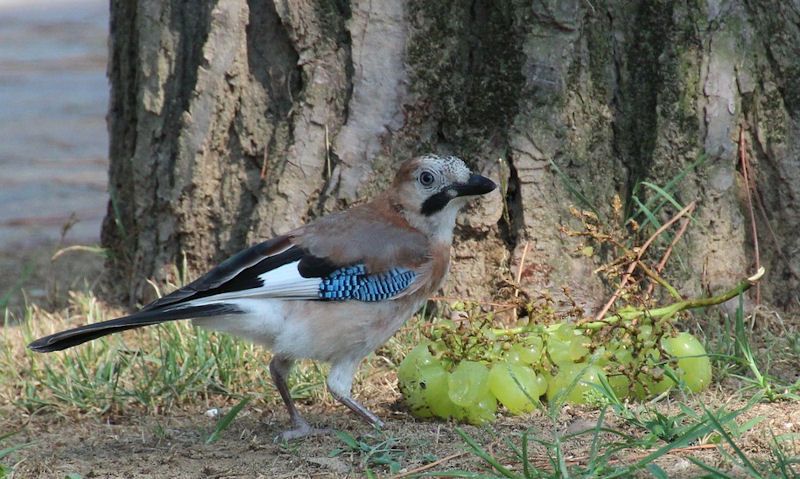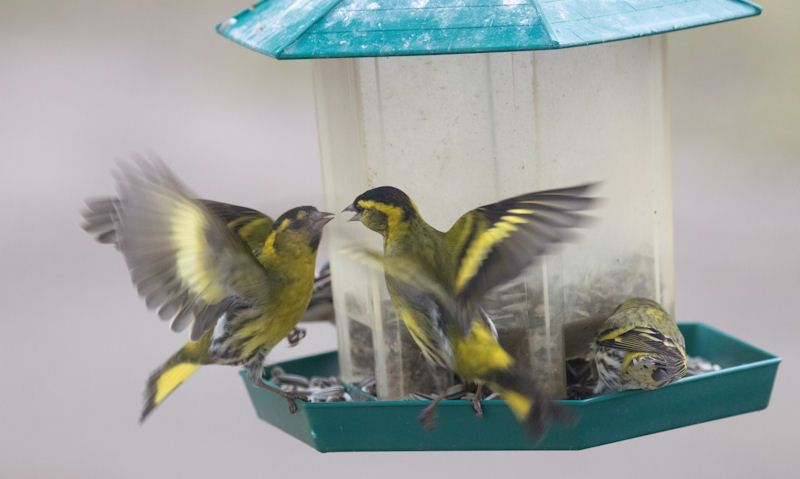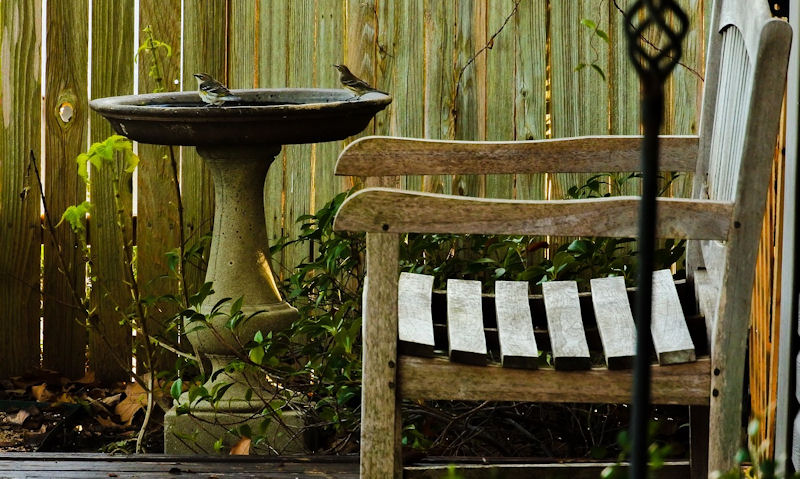Can wild birds eat grapes
Tempt wild birds into your garden with white or red grapes, preparation is important by washing them before serving to birds, as well has throwing away rotten ones.
Wild birds within the UK will take to eating grapes if left out in the garden. Keep them whole but cutting them in half will release the sweet tasting juices that might help you attract the birds to your table or lawn, well preferring to eat grapes off the ground.
Serve up vitamin rich, juicy, sweet tasting red or white grapes to the lucky visitors to your garden. Grapes are healthy and perfectly acceptable for wild birds to eat.
Well a number of common British garden birds will eat fruit found deep into the countryside or on someone's unfortunate fruit tree.
Feeding them on the bird table is ideal, but you may need to make adjustments over time to see which positon is best.
It takes all sorts of interesting fruits to entice wildlife to your garden, with grapes offering a cheap, but convenient solution.
Save feeding grapes to wild birds when only the bird feeder is in short supply, or need filling up; this will then force the birds to eat the grapes - or at least give it a sniff.
If anything, this is perfect for attracting birds to your garden if you don't have a feeding system setup, with leftover grapes or a few to hand left out on the lawn or top of wall.
What birds eat grapes
Many common British garden birds will stop by your garden, well some may have look at the grapes, you're more than certain to get a bite from all Thrushes, Tits and Blackbird.
Coal Tits well preferring to feed on the peanut feeder, a few nearby grapes may take there fancy, which is also true for Blue Tits.
Now, its bit of a grey area attracting Starlings as they may deter all birds from visiting your garden; if you have any regularly visiting Starlings, then wait until they're not around before laying out the grapes for the small garden birds only.
Well the Blackbird is part of the Thrush family they to are wild birds that eat grapes, and they shouldn't be hard to spot with there orange beak.
Talking of the Thrush family, look out for the white, black spotted underside of the Mistle Thrush. Well naturally feeding on berries in the wild, you just might get them eating your grapes.
Do white or red grapes matter?
Little difference in white and red grapes which makes both types acceptable to wildlife, so wild birds in turn will eat grapes regardless of colour.
You may find that laying both white and red grapes, the birds make take a liking to one than the other, preferring the colour of the red, to the white/green tinge.
If birds visiting your garden that eat grapes out in the wild or farm crops regularly at that time of the year, then they make stick to that type in your garden.
Small quantity for quick snack
If you've left out a good supply of bird food on the table or within the feeders, chances are they may neglect the grapes all together.
So feed them grapes only when the feeders are empty and there's no food around the garden - including any wild fruits growing in your garden.
Take an handful and place them in your garden where you can spot them coming and going, observing whether they're taking to the grapes or not.
As soon as the supply is running low, only then hand out a bunch more on top of the current pile.
If through the day they're not biting, then it might be wise to remove the grapes, wash the surface if possible, and forget about it until another time.
Grapes nutritional value
All fruits that people can eat are usually acceptable for wild birds, and well far less value, they so offer a small quantity of nutritional value.
And there's absolutely no fat in grapes which means not cholesterol.
Only a small amount of calories so not any good if they're building up fat content, but calories all the same which they do need.
Excellent source of vitamin C and K, which is perfect for people and benefits wild birds in terms of the vitamins they need for that energy boost.
There's also a small amount of minerals in copper, which would have no effect on them whatsoever.
How to prepare
Prepare all grapes just as you would before snacking on them yourself.
Ideally you would want to remove grapes from the vines, then one by one checking them over to make sure they are in good health with no rotten ones, before popping them into a big pint glass.
Well in the glass it makes for a good washing area; fill glass of grapes with water then mix thoroughly around, taking care to remove all bits.
Then empty glass of water then repeat the process two to three more times.
Dab try with paper towel, then head to the garden to find a suitable spot that won't pick up dirt and nasty foliage.
On the bird table
Clean, try and whole grapes should ideally be put on the bird table, sitting on the surface with nothing else around them.
If your bird table is a busy one then it won't be long before Tits or even Blackbirds stop by, but if its not that busy you have a wait.
As the bird table has a natural shelter from the roof, on a hot day the grapes should keep for a couple of hours. But remember to remove them after this time and wash your wooden bird table of the sweet, sticky juices left behind.
You're not limited to keeping the grapes whole mind you, the bird table is an ideal place to cut them in half to entice them to visit, but again, make sure you was the table after use.
Grapes in the bird feeder
Not to worry if you don't have a bird feeder of any type available as you don't need to feed wild birds grapes from bird feeders.
That includes single feeders on a bracket or tree branch, or on an assortment of hanging feeders on a pole system.
If you do have an empty peanut feeder to hand, experiment by filling it with a number of grapes, to see if that will take to a larger number of birds that don't usually feed on fruit.
We've suggested the peanut/nut feeder only, as the metal mesh wiring well make it easy for all species to nibble through the gaps.
And as Tits take to the peanut feeder more often and do prefer peanuts above all else, they will head to this feeder so it might be a good idea to tempt them with grapes.
If this fails, why not fill the feeder with peanuts, then use a handful of grapes to top up the feeder the rest of the way.
Bound to fail, but these little experiments are fun to do and make for interesting viewing in regard to bird behaviour at the feeder.
On a hanging tray
All else fails, and it often will, we can say for certain and a 100% guarantee the wild birds will eat grapes off the hanging bird feeder tray.
Hanging off the pole station along with the assorted feeders for birds, the mesh design tray offers the perfect spot to drop some grapes as the birds sit around the edge, inspecting the juicy fruit.
If you want you could take this hanging bird tray and replace the flower basket by hooking it up to the wall bracket or a strong tree branch.
Around the garden
If they're not biting on the bird table or feeding tray, carefully position a handful of grapes on the ground to see if they will feed away from your feeder.
Don't be tempted to cut them up and throw over the ground, this will quickly attract unwanted attention from rodents, insects, bugs or blackbirds.
If you don't have a rat problem by not venturing near to your garden, you should be fine to proceed.
If you must chop up the grapes, only cut them in half as this size should be sufficient enough for them to eat or sip. Any smaller and it quickly turns to mush as they feed.
Once cut in half try to scatter the grapes around the garden on hard, smooth, open surfaces that can be washed after use.


